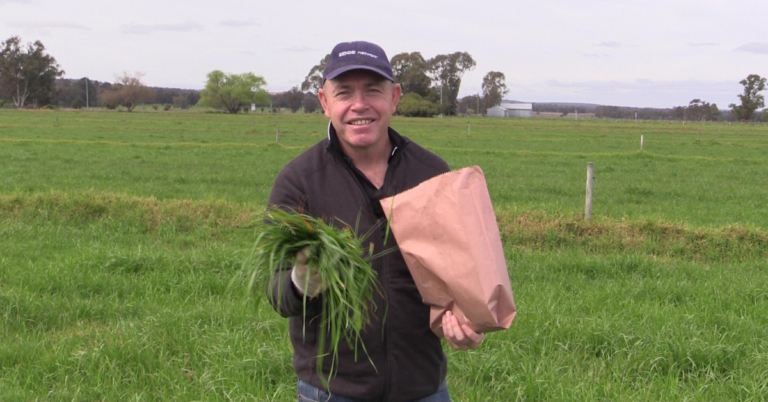
Agronomist Dan Parnell.
Nutrient management in pastures is typically based on soil tests. However, soil tests don’t accurately predict requirements for all essential nutrients, especially trace elements.
Getting trace elements right is critical not only for plant growth but also animal health.
A key agronomic tool that can improve nutrient management is plant-tissue testing. Typically under-utilised compared to soil testing, tissue testing can assess the status of more than a dozen essential nutrients. It can identify threats to growth before they become a problem and is a good first step in diagnosing unexplained problems.
Agronomist Dan Parnell explains three ways that tissue testing can help farmers, and how samples can be collected.
Prognosis
“Tissue testing can be a prognostic tool to predict a nutrient issue in the future, even though the pasture or crop may currently be growing ok.
“In this situation you are looking for a representative sample of the major production zones within the paddock and taking transects out of that area. I try to do a zig zag pattern across this paddock in case the spreader had a bit of overlap or there is something unusual on a straight line through the paddock. We don’t want to just follow that line.
Diagnosis
“If you’ve got a problem with pasture growth in a particular area, tissue tests can be used to see if it’s being caused by a nutrient deficiency. As a diagnostic tool, it’s good to take a sample from the problem area and a comparative sample from an area that’s growing a little bit better. That might help isolate the problem. And if it is a nutrient deficiency, it’s usually isolated to a particular soil type, so that’s another clue that a deficiency is present.
Calibration
“After you’ve soil tested and fertilised based on the recommendations, it’s good to know if the amount applied was appropriate. Plant testing is a good tool to test that. Soil tests are good but it’s not perfect, and plant testing is a good support tool to help refine your fertiliser program if needed. So that’s where it’s really important.
Tips for sampling plant tissue
“Rural merchandise stores and some of the fertiliser companies will supply plant testing kits.
“An important part of collecting samples is to avoid contamination. Kits come with gloves and I recommend using them because the lab tests are very sensitive and can be affected by chemicals on your hands.
“It’s very important to pick the particular species that you are going to tissue test. The critical values below which nutrients are a problem vary for different species. If you’ve got a mixed sward such as clover and ryegrass it’s ideal to pick one or the other. If you get a mixture you might not get much indication of what’s going on. Species can be difficult to separate but you should do your best.
“With pastures we are generally sampling leaves and petioles. We take a pasture sample just like a cow would eat pasture, and keep doing that at random spots through the sample area, avoiding urine patches, camps or feed areas where nutrient levels may be unrepresentative. You need a good handful in your bag, and it’s always better to have more than not enough.
“It’s easy to get samples mixed up so be really careful about your labelling and the sketches you might draw.
“Do the job early in the week so samples aren’t sitting in the post over the weekend. We want to get them to the lab as soon as possible.”
So next time you’re in your rural store, pick up a plant-tissue test kit and sample a few areas of interest. You never know what you might find!
This project is supported by the Western Beef Association Inc. and South West NRM, through funding from the Australian Government’s National Landcare Program.
